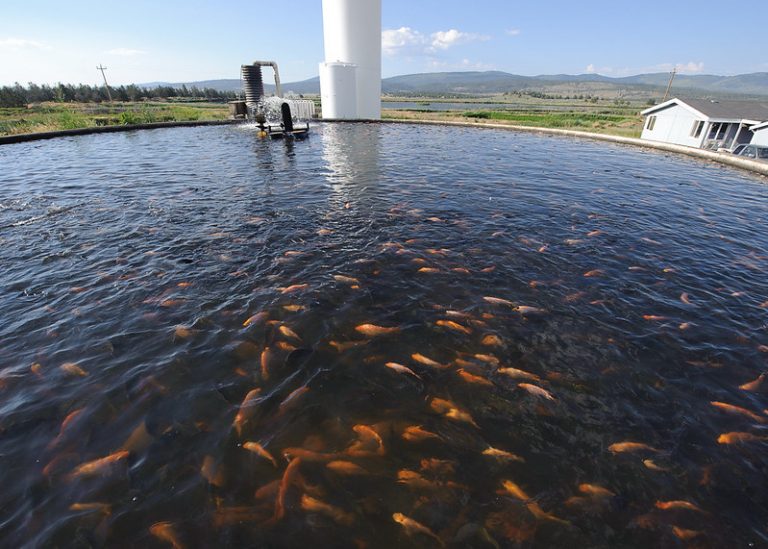
Nile tilapia. Photo by Germano Roberto Schüür, Wikimedia Commons
Tilapias living in crowded aquaculture ponds or small freshwater reservoirs adapt so well to these stressful environments that they stop growing and reproduce at a smaller size than their stress-free counterparts.
A new study by researchers at the University of Kelaniya in Sri Lanka and the University of British Columbia in Canada, explains that while most fishes die when stressed, tilapias survive in rough environments by stunting and carrying on with their lives in dwarf form.
“Tilapia and other fish in the Cichlidae family do not spawn ‘earlier’ than other fishes, as it is commonly believed,” Upali S. Amarasinghe, lead author of the study and professor at the University of Kelaniya, said. “Rather, they are uncommonly tolerant of stressful environmental conditions which, however, elevate their oxygen demand.”
As it happens with other fishes, when tilapia’s metabolism accelerates, it needs more oxygen to sustain its body functions. But the interaction between an increased metabolism and a growing body leads to gills reaching a point where they cannot supply enough oxygen for a larger body, so the fish either dies or just stops growing.

Tilapia fish farm in California. Photo by USDA NRCS, Flickr.
In the case of tilapias, the stress they experience under suboptimal conditions adds to the stress they experience from the surface of their gills not keeping with the increasing oxygen demand of their growing bodies. In consequence, the hormonal cascade that leads to maturation and spawning is triggered at smaller sizes than under optimal conditions.
But the spawning doesn’t occur at a ‘younger age,’ as the fish’s growth process has already ended.
To reach this conclusion, the researchers analyzed the length at first maturity and maximum lengths reached in 41 populations of nine fish species such as tilapia and other cichlids found in lakes and aquaculture ponds across the world, from Brazil to Uganda, and from Egypt to Hong Kong.
When looking at the ratio between the maximum lengths these fishes can reach and their lengths when they reproduce for the first time, they found it was the same ratio previously identified in other freshwater and marine fishes.
“This ratio tells us that tilapias in stressful conditions don’t spawn ‘earlier,’ they just adjust their size downward, but their life cycle continues,” Amarasinghe said.
“These findings will matter to fish farmers, notably in Asia, whose ponds are often full of wildly reproducing, small tilapia for which there is no market,” Pauly said.
The study “The relationship between size at maturity and maximum size in cichlid populations corroborates the Gill Oxygen Limitation Theory” was published in the journal Asian Fisheries Science.
Tags: aquaculture, Asia, Daniel Pauly, faculty, fish, fish stocks, physiology, Research, Sea Around Us